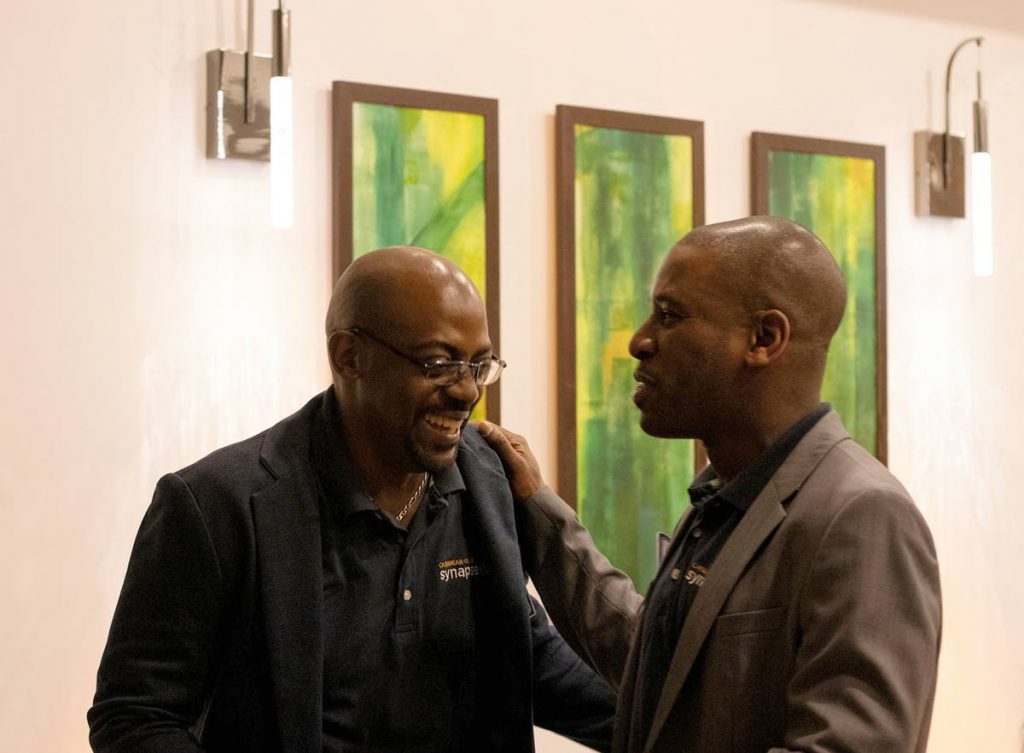How Synapse created a digital workplace

On Monday, the Caribbean Ideas Synapse team was already planning to work from home as part of a company experiment in remote working protocol. However, that day the Prime Minister announced stricter government measures to reduce the spread of the coronavirus.
Since the first case of coronavirus was detected on March 12, the country has been asked to practice social distancing.
This means people are asked not to congregate in groups larger than 25 and keep a metre apart. Because of this, several companies have either closed their offices or asked their staff to work from home. While others are still devising a plan.
Synapse, a digital-first integrated marketing company, is now working from home indefinitely until the government says it is safe to stop social distancing.
Newsday spoke with Jonetta Charles, marketing and business development officer, via a telephone interview on March 17 to discuss the company’s way of choosing a work from home strategy and what tools were best for their team.
“We are working from home until further notice. We were going to do an experimentation on Monday where everybody works from home… It just happened that we had to institute it indefinitely cause of what’s happening.”
That Monday the team of 26 people went on GoToMeetings, an online meeting, desktop sharing and video conferencing software, to discuss its remote working plan. Synapse usually uses GoToMeetings to chat with staff, clients and freelancers.
“We were putting things in place so it was a nice transition,” she said.

Synapse has a work from home policy because they want to encourage their staff to have an optimum work-life balance. The company started in 2010 as a totally remote work. Synapse got a physical office in 2012 and began a work from home policy in 2013.
“We understood that sometimes people need to have a change in life, their environment and figure out exactly what works for them. It’s also a break from the office and giving the flexibility for people to work and if they have to run an errand they could do so,” Charles said.
Previously each permanent employee got one work from home day a week, but in November 2019 it began a three-month experiment where permanent staff got ten work from home days and non-permanent got five.
“We were looking at what global companies are doing, cause that’s one of our desires, we want to be able to build a global company that is pushing and trying things.
She acknowledged different apprehensions employers have about work from home. Some may not trust their employees, while others see time as money and consider clocking in and out of the job as just as valuable as the work itself.
However, she said workers having a flexible schedule allow them to take care of themselves, run errands and find an optimum way to manage their life while being productive.

Synapse had to be flexible in organising the digital workplace. As it was an experiment, the team tested multiple platforms and used different metrics to measure productivity.
For communication, they tried Slack, a chat platform designed for teams, and WhatsApp, but encountered difficulties when people were on varying platforms. Synapse closed off the WhatsApp group and directed everyone to used Slack instead. Charles advised to have one solid communication platform.
"The platform you choose should be dependent on your experimentation to see if it works or not."
For group work, Synapse tried Notion, a collaboration platform that allows people to chat with team members, upload documents, work on documents separately or simultaneously or create virtual rooms where projects are specifically assigned to people.
Part of the experiment was to test if the workplace easily adopted the tool. Charles felt Notion was overwhelming for some.
“Notion, I don’t think it works for everyone. I don’t think team members were using it…It’s a little bit much. Sometimes people just want one thing to do and they operate better with that one thing. When it (one platform) has everything, it can be overwhelming and not everyone has adapted.”
Synapse then tried Microsoft Office’ SharePoint, a web-based collaborative platform that allows for document management and cloud storage. This allowed their documents to be online and accessible on the cloud.
Because of covid19, Microsoft is offering a six-month trial of different Microsoft products.
Companies can access SharePoint along with Microsoft Teams for free. Microsoft Teams is a collaboration and communication platform that uses workplace chat, video meetings and cloud-based storage.
Individuals can register for the “freemium” version of Teams. Companies can register for Office 365 E1 suite which contains SharePoint and Microsoft Teams for free for six months.
People working in education can try out Office 365 A1 which provides a completely free online version of Office with e-mail, video conferencing, customised hub for class teamwork inclusive of Teams.
To access the service local companies can contact any Microsoft partner.
To track the time everyone used to work on a project, Synapse used Harvest, a time tracking app. It gauges time spent on a project and can be used for invoicing.
However, some team members did not like Harvest, Charles included, as it was difficult to account for time.
“We don’t use it anymore because not everyone, myself included, used to go and clock in. I don’t want to know that I’m a robot.”
Listening to the team
To determine what worked and what did not work, Synapse took feedback from team members and let the data guide the decisions.
“We’re always big on data. What are the metrics? What are the things we are going to need to determine success when it comes to productivity?"
She advised not to force staff to use a tool they are not comfortable with.
“It just works against you in the long run.”

She said while the self-isolation of covid19 has caused people to rapidly adopt digital products, shopping around for tools will help.
“Look and see what’s out there. It might have to be rapid in this period, obviously, but put it into some kind of experimentation with your metrics.”
TeamViewer, AnyDesk, Chrome Remote Desktop, Skype, Trello, Asana and LogMeIn are other tools that can be used to facilitate remote work. Many of these tools have either free or trial options people can use while creating their remote workplace.
Aside from Microsoft, Google Hangouts and Zoom, both online chat and video conference platforms, made its premium services free for the public to use because of covid19.
Whatever choice the company makes, she said to research and see what’s out there because there is a wide range of tools available for a digital workspace.
There must be two-way trust and accountability
The key tool for remote work, Charles said, is trust.
Some people work well independently while some work with supervision. The trick is to know which staff member is capable of remote work and trusting in them.
“Some work well not under supervision, but the truth is not everyone will be able to. At the end of the day, you still want to give people some sort of autonomy over their ability to execute their stuff. It’s a trust game.”
While trust is a large part of Synapse success in executing a work from home system, she said the employee must take full accountability and show up to do the work asked of them and ensure their employer is comfortable with them working independently.
“It’s the employees’ duty to see that I am a bigger part of an ecosystem and I have to drive some sort of result or I have to allow for some sort of good to come out of my business so I have a part to play…It’s a two-way street.”
The covid silver lining
Working from home allows for an efficient work-life balance Charles believes. From the busy parent who needs to get things done and care for their children or the person who wants to live a healthier lifestyle by cooking their food and exercising regularly, working from home can afford people that flexibility.
“We get to see how life is facilitated by working from home and you still get to do work and drive your company’s objective.”

One good thing Charles believes is coming out of the covid-crisis is that companies are now forced to create such protocols and bring their teams into a digital workplace.
“There are so many things that could make us a productive, efficient society. The thing about coivd is yes, I know it’s going to affect us negatively in terms of economics and otherwise, but it is pushing us to embrace what has been waiting for us to embrace.
“The digital transformation and all these different kinds of things that needed to happen, we now have to take the plunge and evolve.
Thanks to the work from home trials and errors, Charles believes Synapse is prepared to hunker down for however long they need to social distance and still be productive.
“Now that we’ve tested and learnt, it has allowed us now to transition into this period where it is a pandemic where you cannot prepare for anything, you don’t know what is going to happen, but as a digital company we also understood the need to facilitate online living.”
Synapse is not the only digital-first company to let staff work from home. Companies such as Microsoft and Digicel have mostly moved their operations to remote work.


Comments
"How Synapse created a digital workplace"